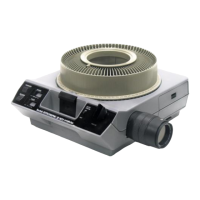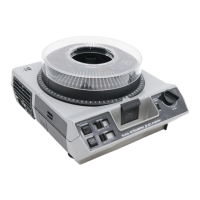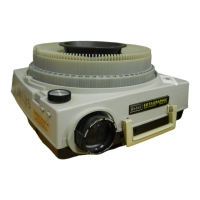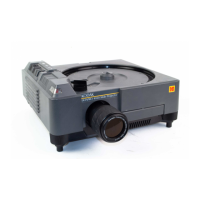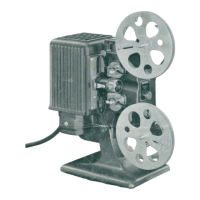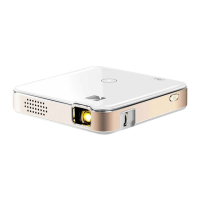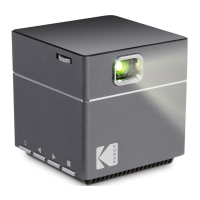Do you have a question about the Kodak EKTAGRAPHIC III and is the answer not in the manual?
Details projector components: front right, back right, and base.
Setting the voltage selector and fuse for projector startup.
Connecting remote control and power cord for specific projector models.
Instructions for loading 80-slide and 140-slide trays onto the projector.
How to orient slides and load them into the tray for front projection.
Adapting for rear-screen projection and using a dissolve control.
Placing, removing, and aligning the slide tray using index marks.
Inserting the lens and operating the projector lamp at different brightness levels.
Using forward/reverse, manual focus, and autofocus features.
How to achieve random projection of any slide in the tray.
Adjusting screen image height and using the timer for slide changes.
Using the reading light, standby light, and special-application receptacle.
How to project single slides by inserting them directly into the projector gate.
Factors to consider when buying lenses: focal length, aperture, and lens design.
Guidance on selecting lenses based on mount type and projection application.
Using illustrations to determine lens focal length and required projector distance.
Procedure to remove a defective slide or foreign object stuck in the projector gate.
Instructions for removing the lens, opening, and closing the built-in viewer.
How to reinsert the projector lens after using the built-in viewer.
Information on using a dissolve control for two-projector fades and slide organization.
Steps to properly shut down the projector after use.
Removing/adding slides by handling the lock ring and ejecting slides.
Details on projector lamps, types, and tips for operation and life.
Step-by-step guide for safely removing and replacing the projector lamp module.
Disassembly instructions for cleaning the lamp module's condenser, glass, and mirror.
Cleaning procedures for the condenser lens and heat-absorbing glass.
Steps to reassemble the lamp module by aligning tabs and inserting screws.
Cleaning the mirror and information about thermal fuses for overheating protection.
Coverage limits, modification effects, and state-specific rights regarding damages.
Contacting for service assistance and instructions for shipping the projector.
Chart identifying contacts, functions, and descriptions for the special-application receptacle.
Details projector components: front right, back right, and base.
Setting the voltage selector and fuse for projector startup.
Connecting remote control and power cord for specific projector models.
Instructions for loading 80-slide and 140-slide trays onto the projector.
How to orient slides and load them into the tray for front projection.
Adapting for rear-screen projection and using a dissolve control.
Placing, removing, and aligning the slide tray using index marks.
Inserting the lens and operating the projector lamp at different brightness levels.
Using forward/reverse, manual focus, and autofocus features.
How to achieve random projection of any slide in the tray.
Adjusting screen image height and using the timer for slide changes.
Using the reading light, standby light, and special-application receptacle.
How to project single slides by inserting them directly into the projector gate.
Factors to consider when buying lenses: focal length, aperture, and lens design.
Guidance on selecting lenses based on mount type and projection application.
Using illustrations to determine lens focal length and required projector distance.
Procedure to remove a defective slide or foreign object stuck in the projector gate.
Instructions for removing the lens, opening, and closing the built-in viewer.
How to reinsert the projector lens after using the built-in viewer.
Information on using a dissolve control for two-projector fades and slide organization.
Steps to properly shut down the projector after use.
Removing/adding slides by handling the lock ring and ejecting slides.
Details on projector lamps, types, and tips for operation and life.
Step-by-step guide for safely removing and replacing the projector lamp module.
Disassembly instructions for cleaning the lamp module's condenser, glass, and mirror.
Cleaning procedures for the condenser lens and heat-absorbing glass.
Steps to reassemble the lamp module by aligning tabs and inserting screws.
Cleaning the mirror and information about thermal fuses for overheating protection.
Coverage limits, modification effects, and state-specific rights regarding damages.
Contacting for service assistance and instructions for shipping the projector.
Chart identifying contacts, functions, and descriptions for the special-application receptacle.
